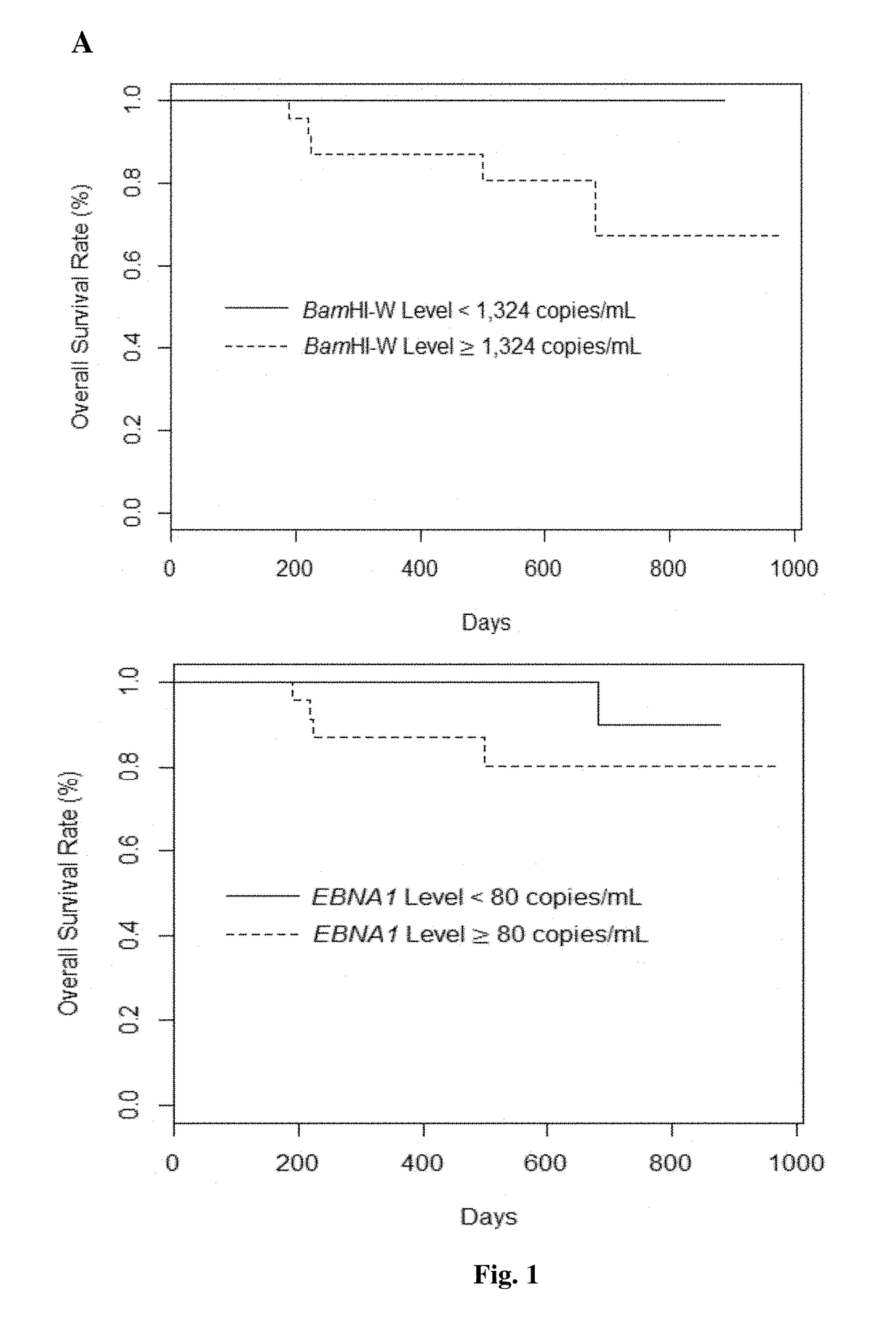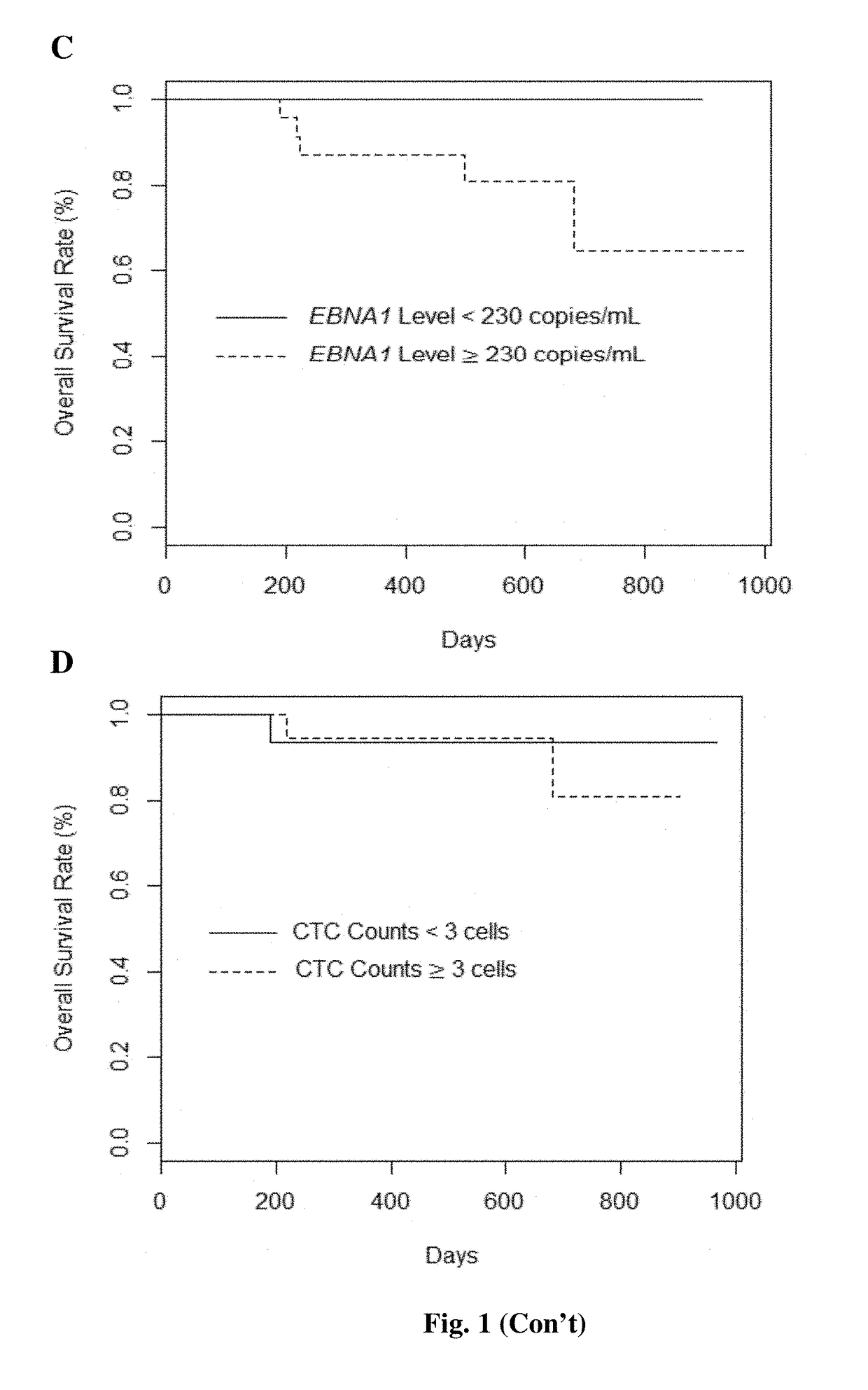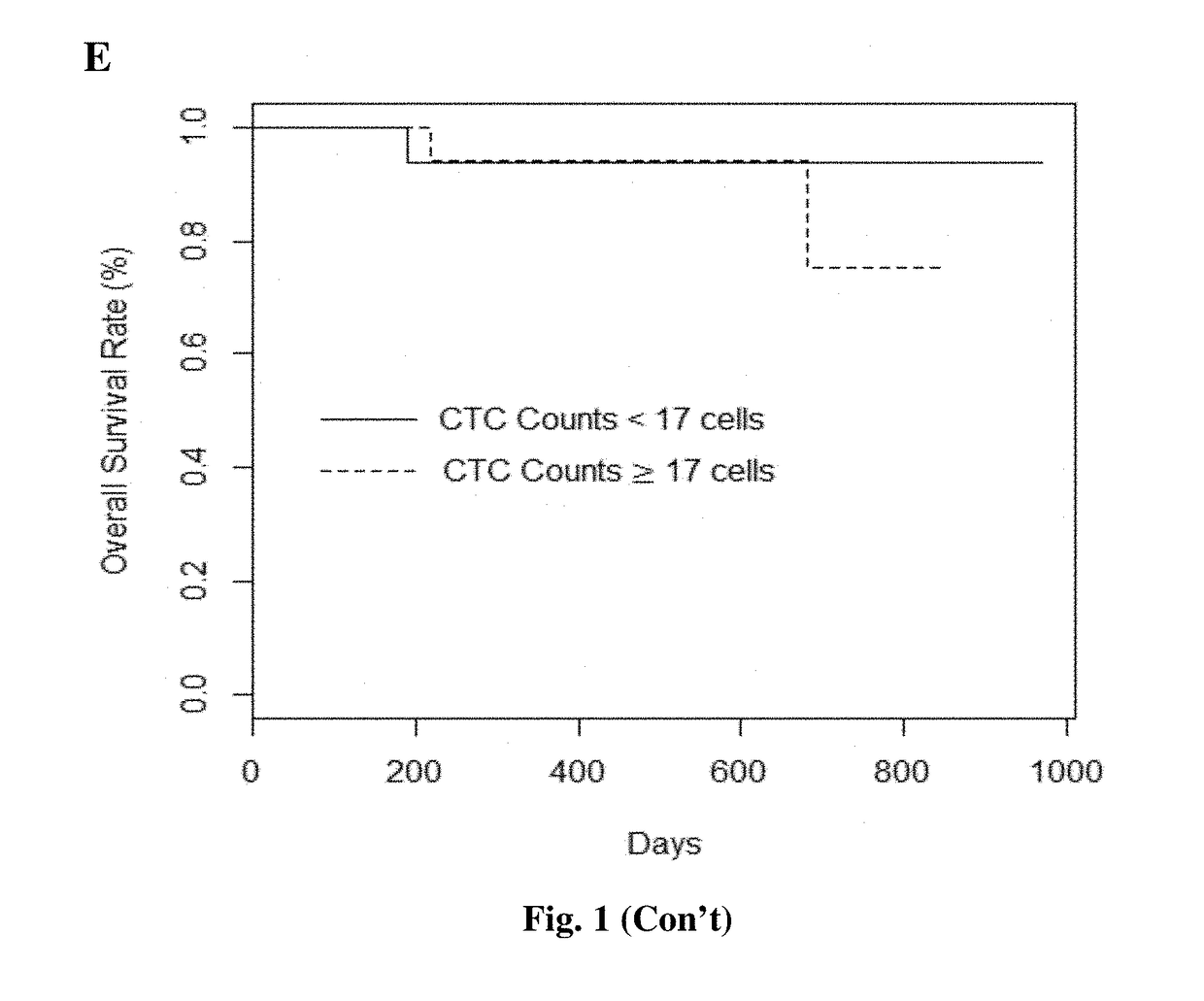Detection and Quantification of Target Nucleic Acid Sequence of a Microorganism
a target nucleic acid and microorganism technology, applied in the field of molecular biology, can solve the problems of high false negative rate, false negative rate of serologic tests, and limitations of each method
- Summary
- Abstract
- Description
- Claims
- Application Information
AI Technical Summary
Benefits of technology
Problems solved by technology
Method used
Image
Examples
example 1
Comparison of Sensitivity and Specificity between EBV cfDNA Assays
[0106]Benchmarking of the EBV cfDNA was conducted using comparison against results from a College of American Pathologists (CAP)-accredited laboratory as well as WHO-approved international EBV standards.
[0107]The clinical sensitivity and specificity of the three EBV cfDNA assays was benchmarked against an in-house EBV cfDNA assay targeting EBNA1 in a College of American Pathologists (CAP)-accredited clinical-grade laboratory at the Singapore General Hospital (SGH), with known analytical performance reported as a sensitivity of 79% and specificity of 100%. Out of 46 NPC patients (Table 1), 31 (69%) were reported to be EBV-positive, and 14 (31%) were reported to be EBV-negative (1 case was not reported due to logistic reasons). Of 31 EBV-positive patients on the clinical-grade assay, both BamHI-W qPCR and EBNA1-dPCR assays showed 100% matching positivity, whereas the EBNA1-qPCR assay showed 80% match. Of the 14 EBV-nega...
example 2
Relationship between NPC Circulating Biomarkers in Pre-Treatment Samples
[0110]Among EBV cfDNA quantitation approaches, BamHI-W qPCR assay yielded the highest concentration of EBV cfDNA levels: 2.4 to 37.7-fold higher than EBNA1-qPCR assay and 2.2 to 25.5-fold higher than EBNA1-dPCR assay (Table 3).
[0111]All samples detected EBV-positive by both EBNA1 assays were also detected positive for EBV by BamHI-W assay. The detection rates of canonical CTCs and potential CTCs are 76% and 94% in pre-treatment samples respectively. Overall, potential CTC count was higher and weakly correlated to canonical CTC count (r2=0.21, P-value=2=0.99, P-value2=0.03, P-value=0.29) nor between EBNA1-qPCR and -dPCR assays (r2=0.06, P-value=0.11). This result corresponded with the similar detection rate of BamHI-W qPCR (89%) and EBNA1-dPCR (85%) assays, with the detection rate of EBNA1-qPCR assay being 67%.
TABLE 4Quantitative levels of NPC circulating biomarkers in 46 pre-treatment samplesPre-TreatmentStatusE...
example 3
Relationship between NPC Circulating Biomarkers and Clinical Stage
[0112]The clinical stages were re-classified to three groups; stage I, stage II-III, and stage IV (Table 4). The combination of stage-II and -III NPC patients was in the light of long-term 5-year follow-up data from Singapore showing similar survival outcomes using modern treatment approaches13. The EBV cfDNA levels in three assays strongly correlated with clinical stages. In contrast, there was no statistically significant relationship between CTCs and clinical stages. These results indicated a strong association between NPC clinical stage and EBV cfDNA, but not CTCs.
TABLE 5Relationship between NPC circulating biomarkers and clinicalstages in pre-treatment samplesNPCMean ValuesLR Chi-DegreecirculatingStageStageSquareofbiomarkersStage III-IIIIVValuesaFreedomP-ValuesaBamHI-W qPCR9812,140225,84714.1510.0002bAssay(copies / mL)EBNA1-qPCR131,1465,65810.8410.0010bAssay(copies / mL)EBNA1-dPCR101,69927,88514.5210.0001bAssay(copie...
PUM
| Property | Measurement | Unit |
|---|---|---|
| Fraction | aaaaa | aaaaa |
| Volume | aaaaa | aaaaa |
| Volume | aaaaa | aaaaa |
Abstract
Description
Claims
Application Information
 Login to View More
Login to View More - R&D
- Intellectual Property
- Life Sciences
- Materials
- Tech Scout
- Unparalleled Data Quality
- Higher Quality Content
- 60% Fewer Hallucinations
Browse by: Latest US Patents, China's latest patents, Technical Efficacy Thesaurus, Application Domain, Technology Topic, Popular Technical Reports.
© 2025 PatSnap. All rights reserved.Legal|Privacy policy|Modern Slavery Act Transparency Statement|Sitemap|About US| Contact US: help@patsnap.com



